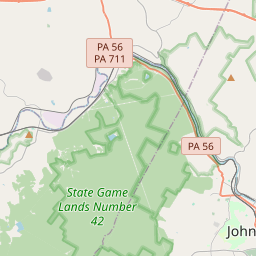Johnstown Civil War Memorial
Historical marker location:












1861-1865
April 12, 1861: The Civil War begins with the Confederate attack on Fort Sumter, located in South Carolina's Charleston Harbor.
April 15, 1861: President Abraham Lincoln issues a call for 75,000 volunteers to serve in the Union Army to suppress the rebellion.
May 24, 1861: The first major land battle, known as the First Battle of Bull Run (or First Battle of Manassas), takes place in Virginia. It ends in Confederate victory.
September 17, 1862: The Battle of Antietam in Maryland becomes the bloodiest single-day battle in American history, with heavy casualties on both sides. The Union forces, commanded by General George McClellan, manage to halt Confederate General Robert E. Lee's advance into Union territory.
January 1, 1863: President Lincoln issues the Emancipation Proclamation, declaring that all slaves in Confederate-held territories are to be set free. However, the proclamation does not immediately free all slaves in the United States.
July 1-3, 1863: The Battle of Gettysburg in Pennsylvania takes place, resulting in a significant Union victory and inflicting heavy casualties on Confederate forces. It marks a turning point in the war.
November 19, 1863: President Lincoln delivers the Gettysburg Address, emphasizing the principles of liberty, equality, and the preservation of the Union.
April 9, 1865: General Robert E. Lee surrenders to Union General Ulysses S. Grant at Appomattox Court House in Virginia, effectively ending the Civil War.
April 14, 1865: President Lincoln is assassinated by John Wilkes Booth while attending a play at Ford's Theatre in Washington, D.C.
May 10, 1865: Confederate President Jefferson Davis is captured, signaling the collapse of the Confederate government.
December 6, 1865: The Thirteenth Amendment to the United States Constitution is ratified, officially abolishing slavery throughout the country.
While this timeline provides an overview of key events, it is important to note that the Civil War spanned over four years, from 1861 to 1865, and encompassed numerous battles, campaigns, and political developments that shaped the course of American history.
More history nearby
The Pennsylvania State University, commonly known as Penn State, was established in 1855 and is one of the largest universities in the United States.
During the 19th century, Cambria County experienced rapid industrialization and became an important center for the iron and steel industry. The discovery of vast reserves of high-quality bituminous coal in the region led to the establishment of numerous coal mining operations. Cambria County's strategic location, abundant natural resources, and access to transportation networks, including the Pennsylvania Canal and later the Pennsylvania Railroad, further boosted its economic development.
The county played a significant role in the American Civil War. It was here that the famous Battle of Gettysburg's debris and wounded soldiers were transported for medical care. Additionally, numerous regiments recruited from Cambria County participated in various battles, including the battles of Antietam and Fredericksburg.
In the 20th century, Cambria County faced the challenges of economic decline due to the collapse of the steel industry and the gradual depletion of coal reserves. However, the county has adapted and diversified its economy through the development of healthcare, education, and tourism sectors. Today, Cambria County is known for its historical landmarks, including the Johnstown Flood National Memorial, which commemorates the tragic flood that occurred in 1889. The county continues to thrive as a vibrant community with a deep sense of history and resilience.
Cambria County Timeline
This timeline provides a glimpse into the major events and milestones that have shaped the history of Cambria County, Pennsylvania.
- 1804: Cambria County is established by an act of the Pennsylvania Legislature.
- 1807: The first courthouse is built in the county seat of Ebensburg.
- 1825: The Allegheny Portage Railroad, a transportation system connecting the Eastern and Western divisions of the Main Line of Public Works, is completed in Cambria County.
- 1846: Johnstown is incorporated as a borough.
- 1852: The Pennsylvania Canal, which runs through Cambria County, is completed.
- 1869: The South Fork Dam, located upstream of Johnstown, fails, leading to the devastating Johnstown Flood.
- 1889: The Cambria Iron Company, one of the largest and most successful iron and steel companies in the nation, is founded in Johnstown.
- 1892: The Great Johnstown Flood occurs, resulting in a massive loss of life and destruction of property.
- 1913: The Johnstown Flood Museum is established to commemorate the two major floods that occurred in the area.
- 1950s-1960s: Cambria County experiences a decline in the steel industry, leading to economic challenges.
- 1996: The Johnstown Inclined Plane, a historic cable car system, is added to the National Register of Historic Places.
- Present: Cambria County continues to be home to a diverse range of industries, including healthcare, education, and tourism.